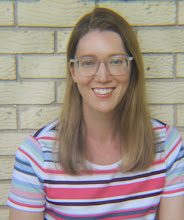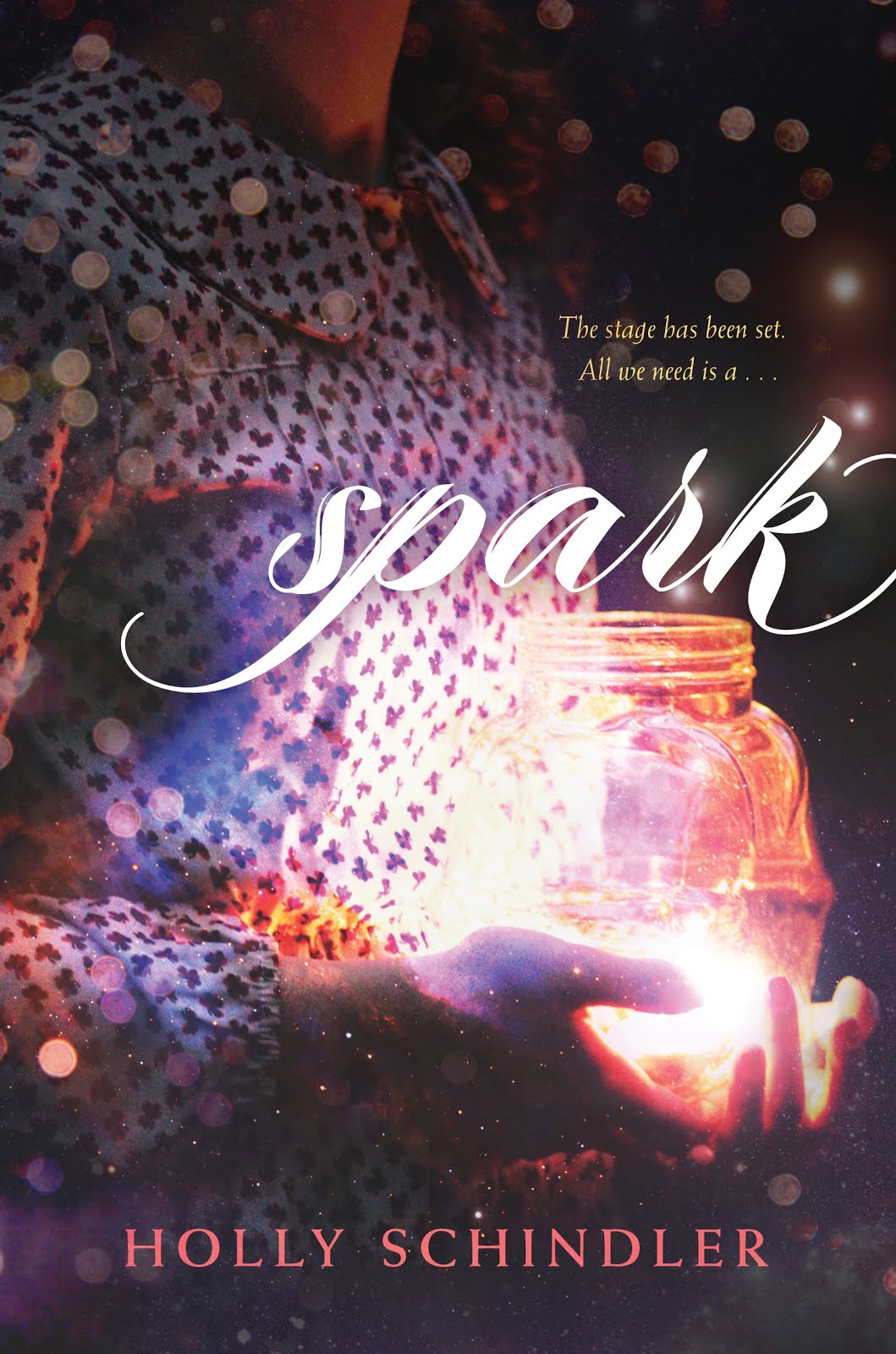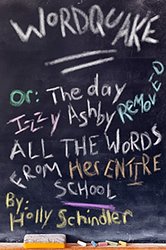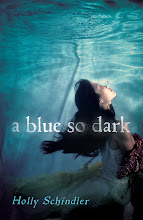I'm delighted to share my chat with Brenda Vicars, author of the recently released POLARITY IN MOTION.
About POLARITY:
Fifteen-year-old
Polarity Weeks just wants to live a normal life, but with a mother
diagnosed with borderline personality disorder, that’s rarely easy. Her
life gets exponentially more disastrous when her sixth-period history
classmates start ogling a nude picture of her on the Internet. Polarity
would never have struck such a shameless pose, but the photo is
definitely of her, and she’s at a complete loss to explain its
existence.
Child
Protective Services yanks her from her home, suspecting her parents.
The kids at school mock her, assuming she took it herself. And Ethan,
the boy she was really starting to like, backpedals and joins the
taunting chorus. Surrounded by disbelief and derision on all sides,
Polarity desperately seeks the truth among her friends. Only then does
she learn that everyone has dark secrets, and no one’s life is anywhere
near normal.
~
Holly: I love the name Polarity—it instantly gave me the image of a girl
being pulled in two different directions. Which came first—the idea for the
story or your character’s name?
Brenda: The idea for the story
sprang forth fairly well developed, and as I slipped into the mind of the
mother, she proclaimed that Polarity was the name of her daughter. I agree with
your reaction—Polarity labels the
struggle she has.
Holly: Polarity’s not in a great place—she’s new to school, her home
environment’s not great…Nude pictures are swirling online, and Child Protective
Services get involved. Have you known or worked with a teen who found
themselves in the midst of so much trouble all at once? How did that affect
building Polarity’s character?
Brenda: I’ve never worked with a teen whose nude picture was on the
Internet, but I have worked with lots of students in tough situations, and I’ve
been awed at how courageous young people can be—how they can work through awful
situations and come out stronger. I
wanted Polarity to show the resiliency that real kids have.
Holly: You and I have dealt with many of the same issues in our work. You
describe Ethan as being the one black guy in the class. My debut MG featured an
African-American protagonist. #weneeddiversebooks is such a predominate
discussion, especially among writers and readers of juvenile lit. What role do
you believe writers should play in depicting characters of differing races and
ethnicity? Do you find it especially challenging to write about characters who
are of a different background than you are? Why or why not?
Brenda: My first connection with young adults was as their teacher, rather
than as an author. I am haunted by the times I took my students to the library
and found that the vast majority of the fiction on the shelves featured white characters. How were my diverse students to develop a
love for reading when there were so few books that depicted their races and
cultures? And what message did the
omission send?
I feel as a YA author, I would be negligent to focus only on my
own race—white. That said, I do worry
about depicting diverse characters appropriately, and I often ask friends of
other races and cultures to read segments and give me feedback. I also immerse myself in YA books by authors
from other races and cultures.
Holly: Another issue we’ve both tackled is a mother with mental
illness—Polarity’s mom has a borderline personality disorder. How has
Polarity’s mother’s mental illness shaped Polarity’s character? How does it
impact the decisions she makes throughout the book?
Brenda: Like any child of an unstable parent, Polarity must navigate the
minefield of tripwires embedded in her relationship with ever-unraveling Mom. Polarity,
like Aura, doesn’t get to be the child.
Instead, Polarity constantly gauges every move to make sure that she
doesn’t set off her mother. Worse, Polarity,
like Aura, is haunted with doubt: Is she like her mother—destined for the same
fate?
Holly: I love Emily Dickinson—are you a fan, too? (Polarity references
her.)
Brenda: Yes, a lifelong fan. And
Dickinson was the perfect poet for Polarity to love. Polarity is shocked when she learns that
Dickinson said she hated the Irish—wishing that they could be scientifically exterminated. Dickinson’s poetry and life experience helped
Polarity to learn that even brilliant, insightful people can be blind to their
own biases—can fail to see their own way of seeing.
Holly: Polarity forgives Tracey. Do you feel forgiveness is an important
component in maintaining a healthy existence?
Brenda: Forgiveness is essential for Polarity to move forward. She would
have been justified to hate Tracey, but that hatred would not have bothered
Tracey in the least. Instead, that hatred would have been a burden for
Polarity.
Holly: My own path to publication was long and winding—what was yours
like? How did you sell POLARITY IN MOTION?
Brenda: “Long and winding” is an apt description of mine as well! I worked about 20 years in education—teacher,
principal, director of support services—before attempting to write a
novel. Novel number one is in a
drawer. It’s an adult literary fiction I
call THIS HOUR’S TERM—took seven years to write. POLARITY IN MOTION is novel number two. It took about a year and a half to write, and
I was able to get a literary agent pretty early—Charlotte Sheedy. However after a year of representation, she
said that none of the acquisition editors she worked with were interested in
the manuscript, and she recommended that I self-publish. Her words were, “Just
get it out there.” I was considering
self-publishing, but friends recommended submitting to Red Adept
Publishing. And here we are!
Holly: What were your reading preferences as a teen? How does that
reading experience influence what you write now? Do you write with potential
teen readers / audience in mind, or do you find that distracting?
Brenda: I’m not sure why—maybe it was just chance, but as a teen I was
totally disinterested in YA literature.
I hungered for fiction about adults—only. I mostly read the
classics—Hemmingway, Steinbeck, Dostoyevsky, Dickens, Bronte. I especially
loved THE GOOD EARTH and tried to read all of Pearl S. Buck’s books. I loved
Maya Angelou’s memoir I KNOW WHY THE CAGED BIRD SINGS. Now, as an adult, I
spend more of my reading time immersed in YA.
I do think about teens and people who care about teens when I
write. I think about the students I’ve
known and the experiences that were important to them.
Holly: What are your favorite writing tricks?
Brenda: I love to have those days when I can start writing first thing in
the morning—still in PJs, and get in several hours before taking care of all
the interfering necessities of life!
When writing a novel, I do a lot of editing as I go. I find that if I edit the work from the day
before, I’m ready to flow right into the new segment.
Holly: What are you working on now?
POLARITY IN LOVE. By the
time I finished POLARITY IN MOTION, Ethan and Polarity had matured and their
needs had deepened. They are ready for greater
risks! Ethan has a larger role in
POLARITY IN LOVE.
~
Brenda
Vicars (brendavicars.com) has worked in Texas public education for many years. Her jobs
have included teaching, serving as a principal, and directing student
support programs. For three years, she also taught college English to
prison inmates.
She
entered education because she felt called to teach, but her students
taught her the biggest lesson: the playing field is not even for all
kids. Through her work, she became increasingly compelled to bring their
unheard voices to the page. The heartbeat of her fiction emanates from
the courage and resiliency of her students.
Brenda’s
hobbies include reading, making things out of re-purposed wood, pulling
weeds in the garden, and going to Zumba classes.
Brenda's giving two copies of POLARITY IN MOTION! Two winners will be randomly chosen on March 26.
Giveaway:
a Rafflecopter giveaway





































Thank you, Holly, for the interview and for featuring Polarity! Appreciate all you do both for your own readers and for other authors.
ReplyDelete